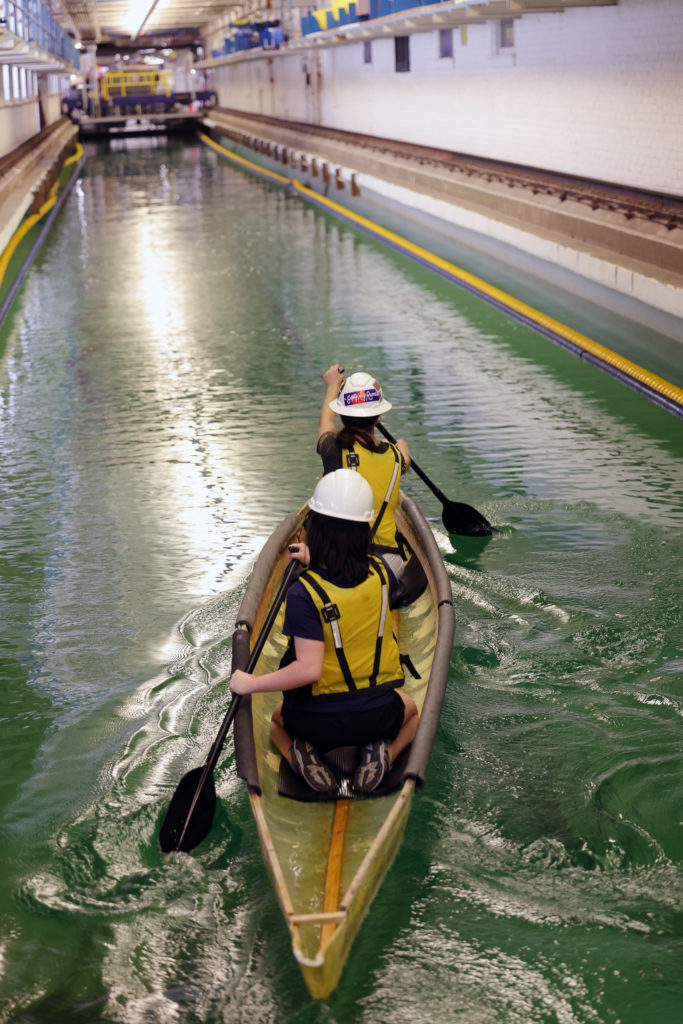
Engineers are made on student teams
How student teams turn concrete, lumber and grit into more than the sum of their parts.
Written by:
Written by Jessica Petras, photos by Brenda Ahearn
Step into the Wilson Student Team Project Center during the school year and you’ll find a scene of controlled chaos. Teams center on their assigned workspaces, spilling out into the aisles as their projects grow. There’s a sense of grittiness. Creation in progress.
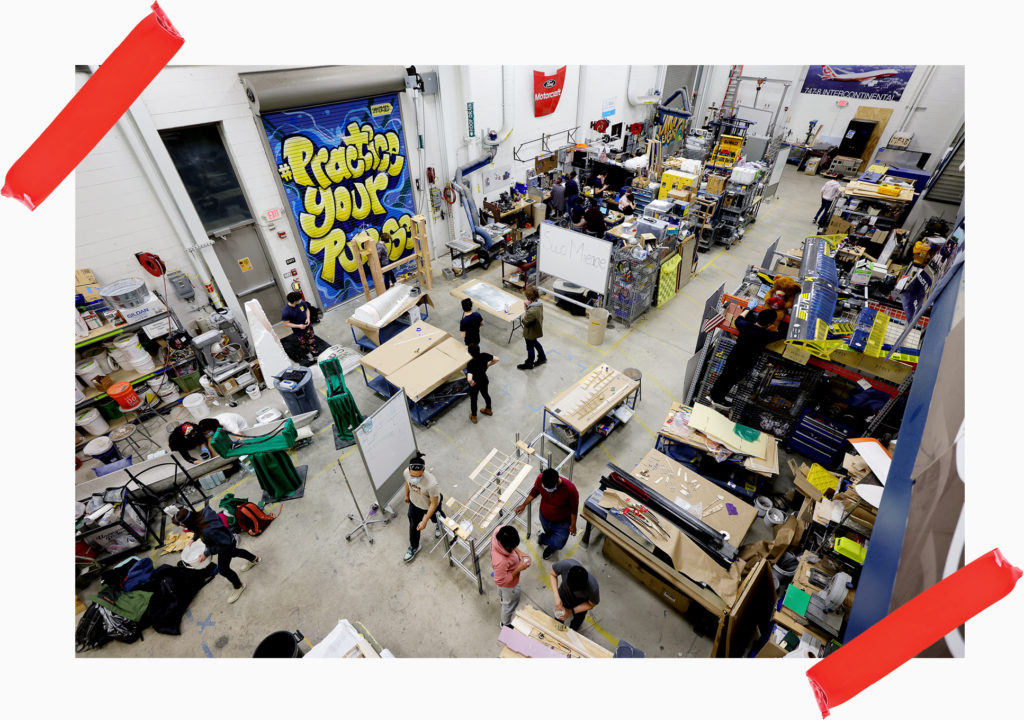
On the surface, many of the teams don’t seem to have a lot in common. They all design and build very different projects, often for competitions against other teams across the nation or globe. The Mars Rover Team (MRover) creates a rover for space exploration; M-Fly builds planes; Supermileage produces a high-efficiency car; and the Concrete Canoe team builds…well, a canoe made of concrete. But for students on all of these teams, or any of the 26 other student organizations that use the Wilson Center, their time on the team often turns out to be one of their most formative experiences at Michigan Engineering.
Breaking out of your bubble
As president of MRover for the 2021-2022 school year, mechanical engineering undergraduate Rachel Li led a team of engineering and non-engineering students. Her exposure to different disciplines on MRover led her to pursue a master’s degree in electrical and computer engineering after earning her bachelor’s degree in mechanical engineering.
“As a mechanical engineer, you have to design your part of the project so it can be integrated and controlled with our electrical systems,” said Li. “You can’t have unreasonable expectations for what our software is capable of doing.”
The Concrete Canoe team makes an effort to include someone from the U-M Penny W. Stamps School of Art & Design on each year’s team to help round out their skillset. For more than two years, art and design undergraduate Lily Gandhi has brought her design perspective to the team.
“Even if you’re an engineer, you’re not always going to be working just with engineers,” Gandhi said. “My teammates have learned how to work with someone who doesn’t have that engineering background, and how to explain things in a simple but direct way.”
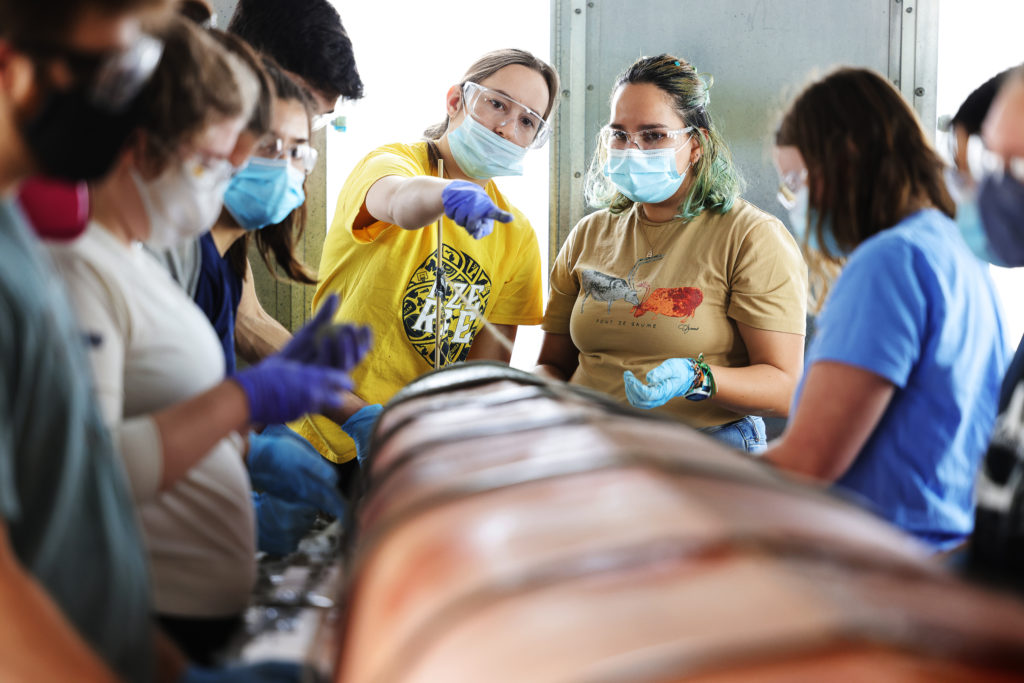
On “pour day,” Emma Anielak and Lily Gandhi (center left to right) begin to construct the canoe. Gandhi led the aesthetics subteam, which focused on presenting the canoe and technical report in the best possible light.
“Having a very good-looking technical paper is a way that we can come across as more professional,” said Deborah Reisner, Concrete Canoe team captain for 2021- 2022 and former materials science and engineering undergraduate. “We really feel that having different areas of expertise helps the team do a lot more new and interesting things.”
During a mock mission, the Mars Rover executes commands received from MRover team members inside the Ford Motor Company Robotics Building. This simulates the experience of a team on Earth sending commands to a rover in space.
The team is composed of life scientists and engineers who collaborate to bring their separate disciplines together for a successful mission. The life scientists on the team design biological tests and work closely with the engineers to make sure the mechanics of the Rover support those tests.
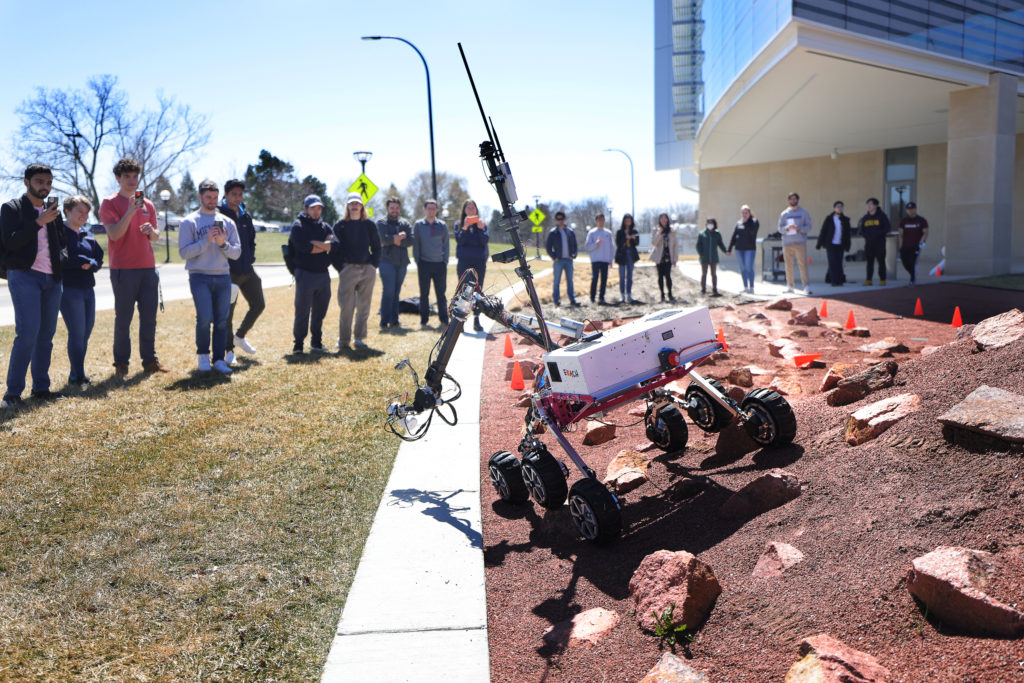
Let’s make some mistakes
Being a member of a student team is a different experience than being in a classroom, where the focus is on learning the theory, or in an internship, where supervisors are there to make sure nothing goes wrong. On a team, students make mistakes. And that’s kind of the point.
“If you have an idea, you can bring it to life,” said Derek Johnson, Supermileage chief engineer and mechanical engineering undergraduate. “There’s not some expert over there going, ‘That’s dumb, that’s not going to work.’ Sometimes we end up wasting time, but at the end of the day, we learn something from everything we do.”
Most of the teams participate in at least one competition during the year, and of course it’s nice to win. MRover, in fact, placed first in the 2022 University Rover Challenge—their first-ever podium finish. But over and over again, the team members emphasize that winning isn’t the ultimate goal.
“More than anything, we want to make sure that our members learn throughout the process because that’s what we’re really here for,” said Elgan Wu, M-Fly advanced class chief engineer and aerospace engineering master’s student. “It’s OK if we don’t win that competition. That’s beside the point; it’s like the cherry on the top.”
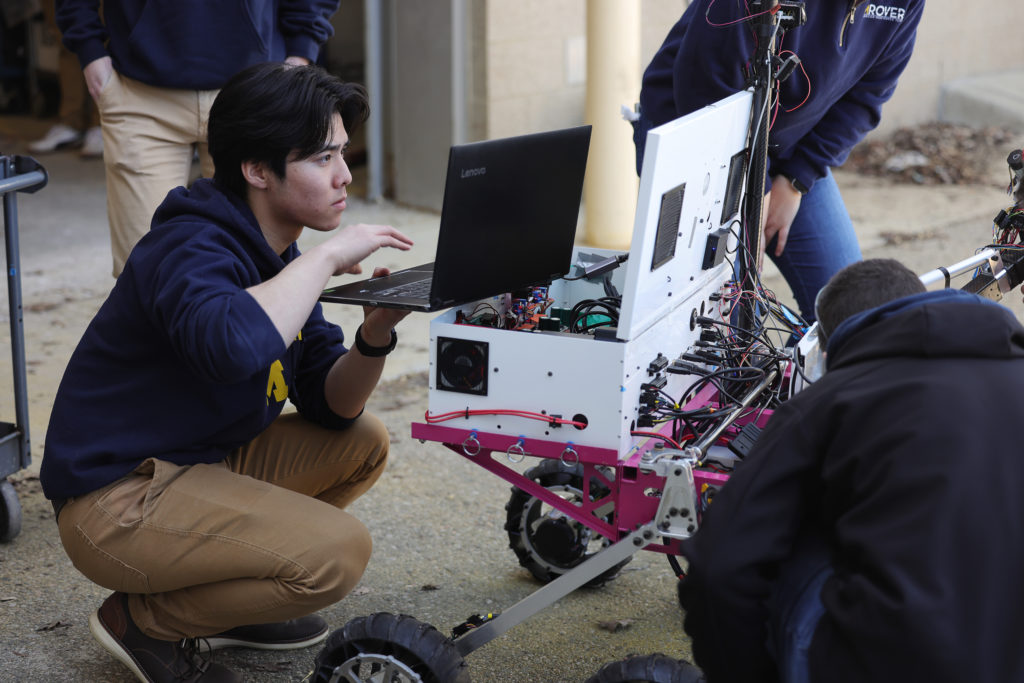
Justin Yu of MRover works on a computer following a mock mission. The team provides a safe space to try something new, even—or especially—if it’s a risk.
“Sometimes a big motivation for a design decision is not that our old systems were bad, but just that we want to try this because we think it’ll work,” said MRover’s Rachel Li. “You can try a lot of things, and you know that if you fail, there’s a very large amount of support.”
From left to right, Xanthe Thomas, Gillian James, Eli Richards, Deborah Reisner and Ben Routhier fill their concrete canoe with water to prove it can float just below the surface—a requirement for the competition.
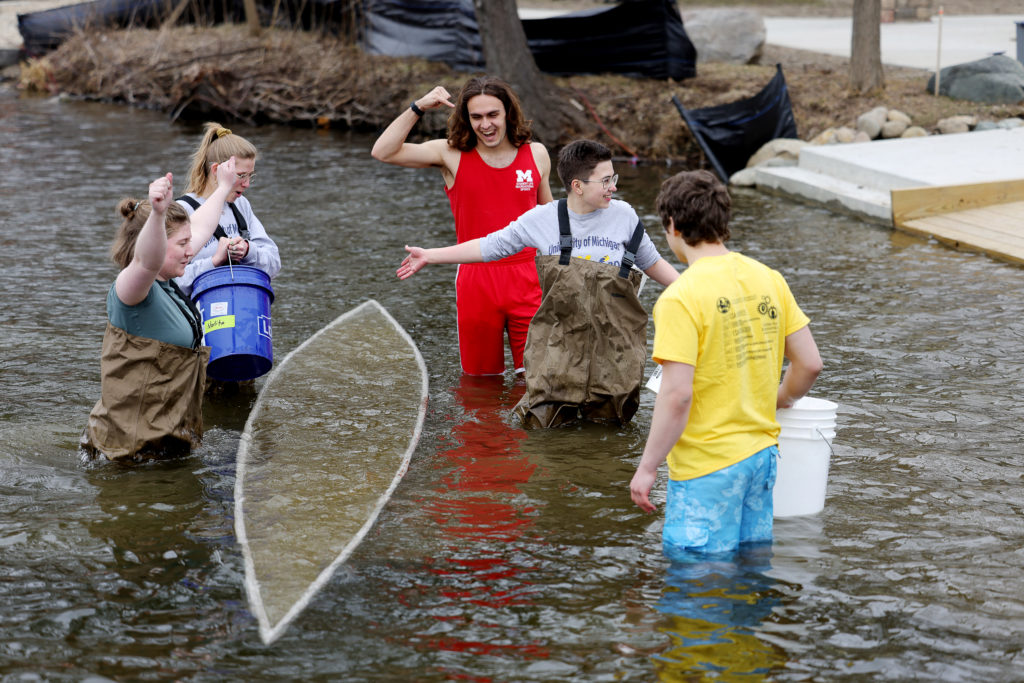
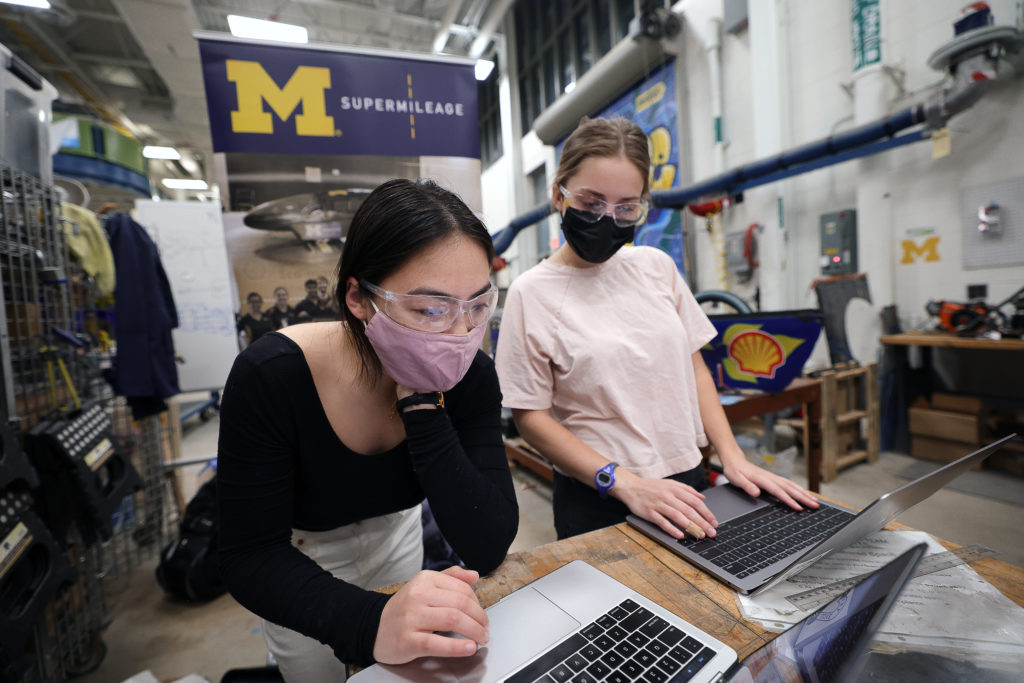
Supermileage team members Michaela Garvey and Chloe Kimberlin work into the night at the Wilson Center.
It’s all about the people
It’s easy to forget that students volunteer their time to be on these project teams. What makes someone keep coming back year after year, to work late nights in the Wilson Center and fit in extra work outside their classes? The people.
Incoming MRover president and physics undergraduate Abby Feyrer said the team dynamic was what drew her to MRover as a first-year student. She hopes to continue traditions that Li established, like starting weekly general body meetings with a pancake brunch to help team members get to know each other as people.
“We don’t just want people to have a ‘professional’ relationship. We want it to be more of a friendship relationship,” Feyrer said.
The Supermileage team also made decisions that prioritized the team over competition success. They voted to pivot their team for the 2022-2023 school year by entering a new “Urban Concept” competition division, where they’ll start from scratch to build a vehicle unlike anything they’ve built before.
“We’re kind of back to square zero, but I think we all love it,” said Johnson. “It’s this place where it allows us to bond as engineers, but also friends.
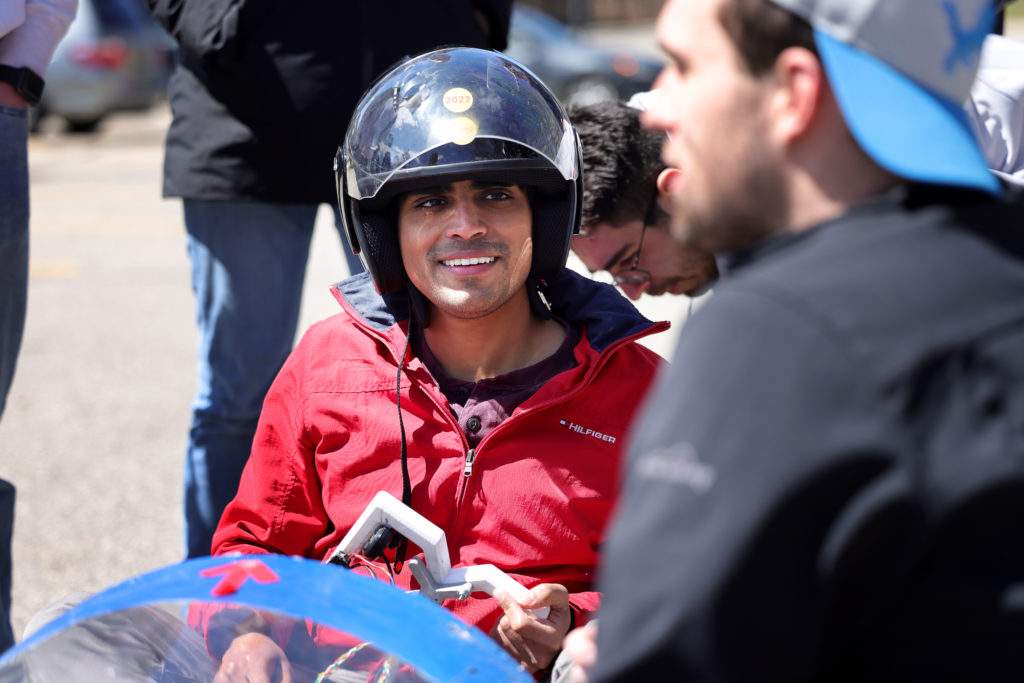
After the competition season, the Supermileage team lets a few members get some first-hand experience with the vehicle they’ve helped to build. Derek Johnson (foreground) looks on while Parth Raut prepares to drive.
Members of the Michigan Concrete Canoe Team at their end-of-season gathering, where “paper plate awards” were distributed.
The lighthearted awards bring the team together and often reference inside jokes, like this award Erdem Ozdemir is presenting to Gillian James (seated, arm outstretched).
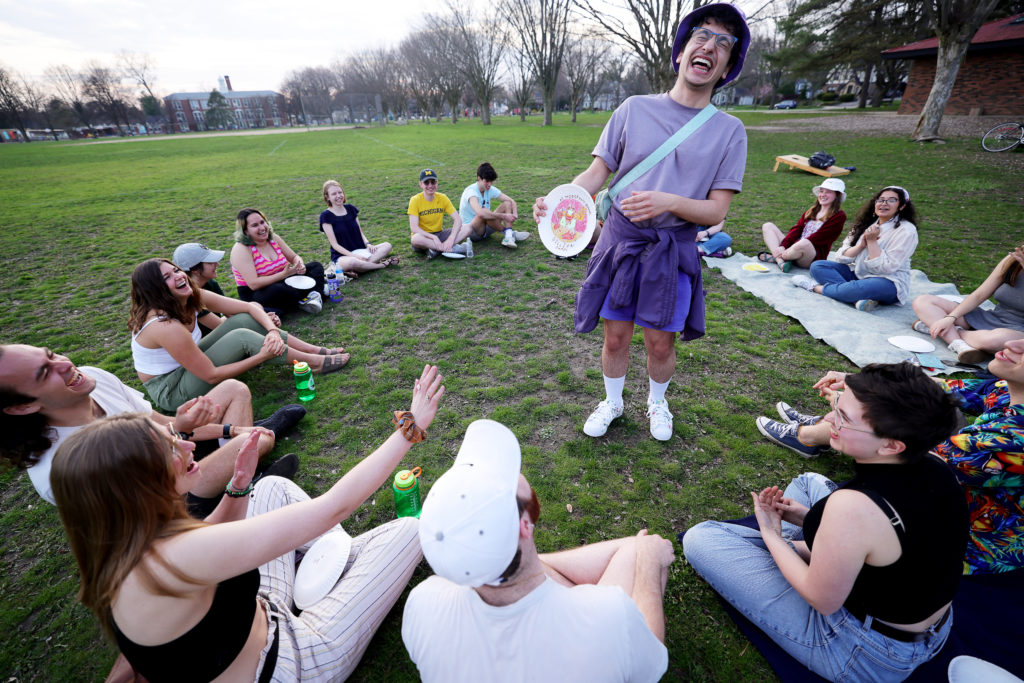
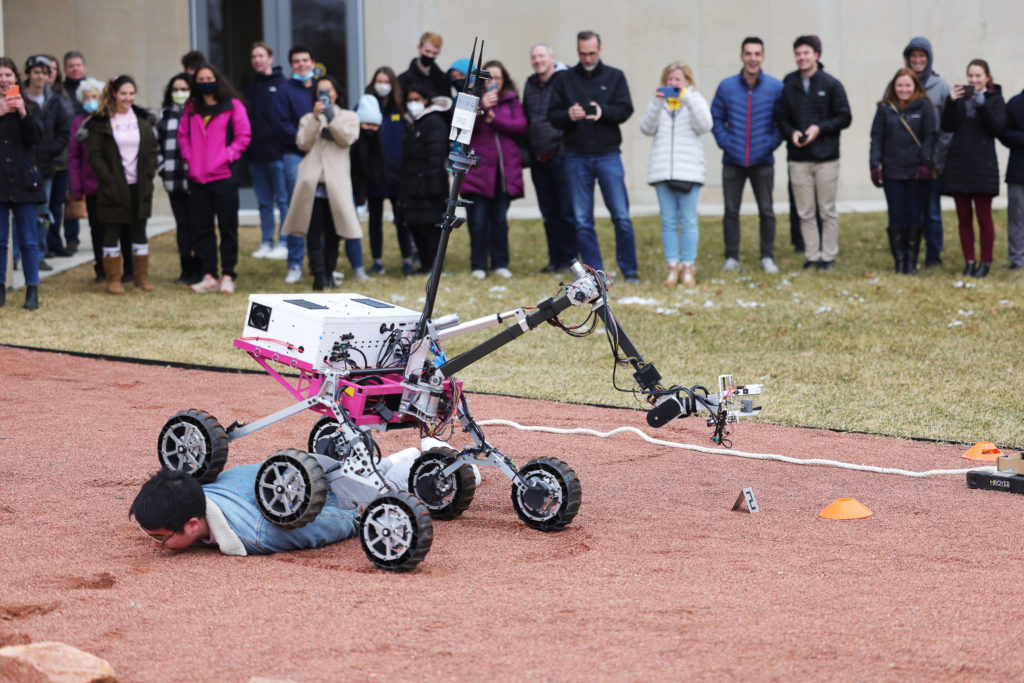
During the reveal of the 2021-2022 rover, David Baek lets the Rover drive over him to demonstrate how it tackles obstacles.
Moving on
At the end of the year, projects wrap up. Canoes, rovers, planes and cars get stored away to be used for testing next year. There’s a bittersweet feeling in the Wilson Center. But what these teams have learned—technical skills, yes, but also collaboration, time management and leadership—stays with them and serves them in their future careers.
Reisner graduated in May 2022 and moved on to a job at Wacker Chemical, one of the sponsors of the Concrete Canoe team. Her biggest takeaway from her time on the team was her ability to work with others outside her field and learn a new subject.
“I’m a materials science and engineering person who didn’t know a ton about concrete but figured out how to find the balance of learning about it, doing my own research and also knowing when to rely on someone else’s expertise,” she said.
It’s not just the engineers who are getting relevant experience for their future careers. Gandhi is interested in working on the design of furniture and other consumer products after she graduates.
“I’m interested in the opportunity to work with other people who are not artists or designers—to bring my perspective and contribute to something greater,” she said. “I’ve really been able to put that into practice with the Concrete Canoe team. Spending the hours on it every week is so worth it.”
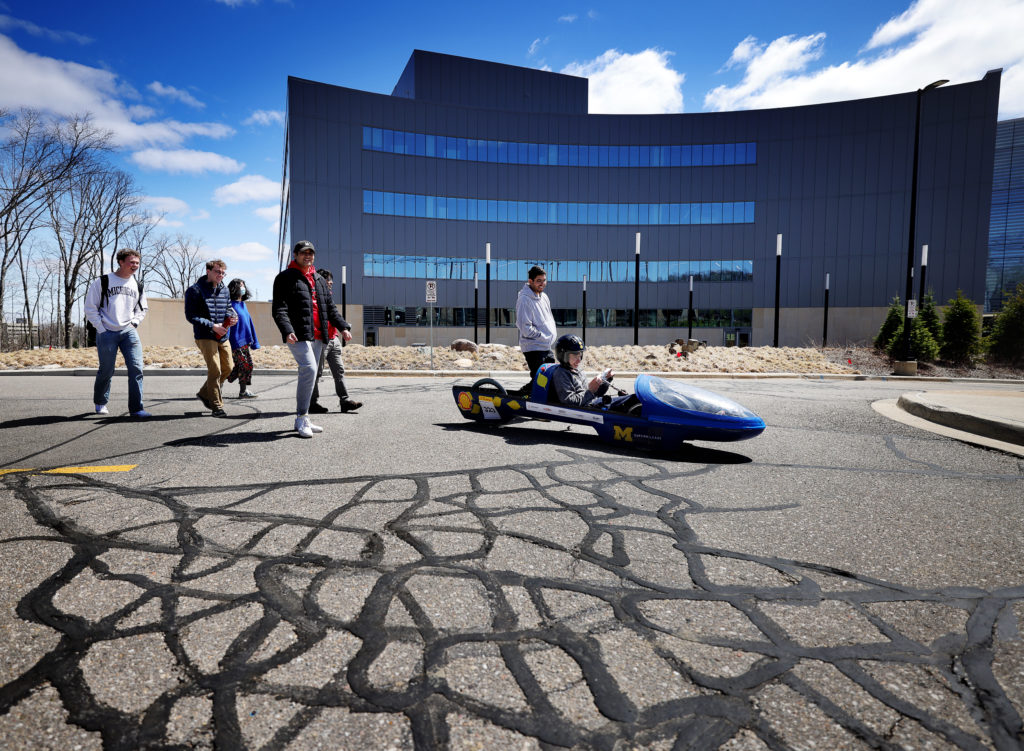
Supermileage team members drive their vehicle in the parking lot near the Ford Motor Company Robotics Building.
From left, Hypatia Magyar, a new member of the Supermileage team, learns the ropes from Lana Sara and Skylar Lennon in the Wilson Center.
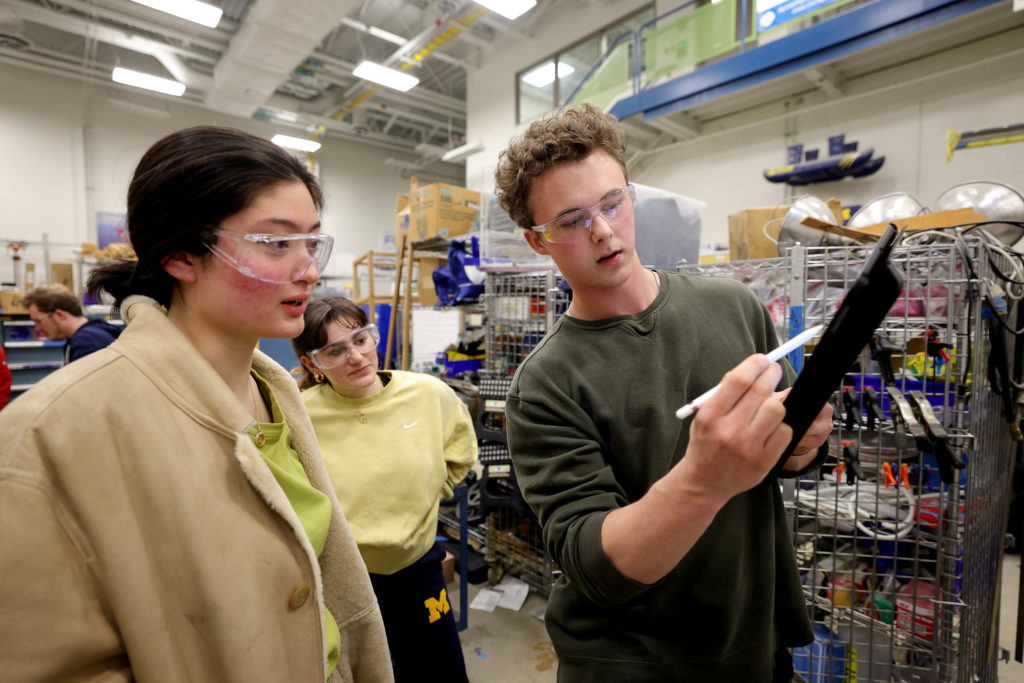
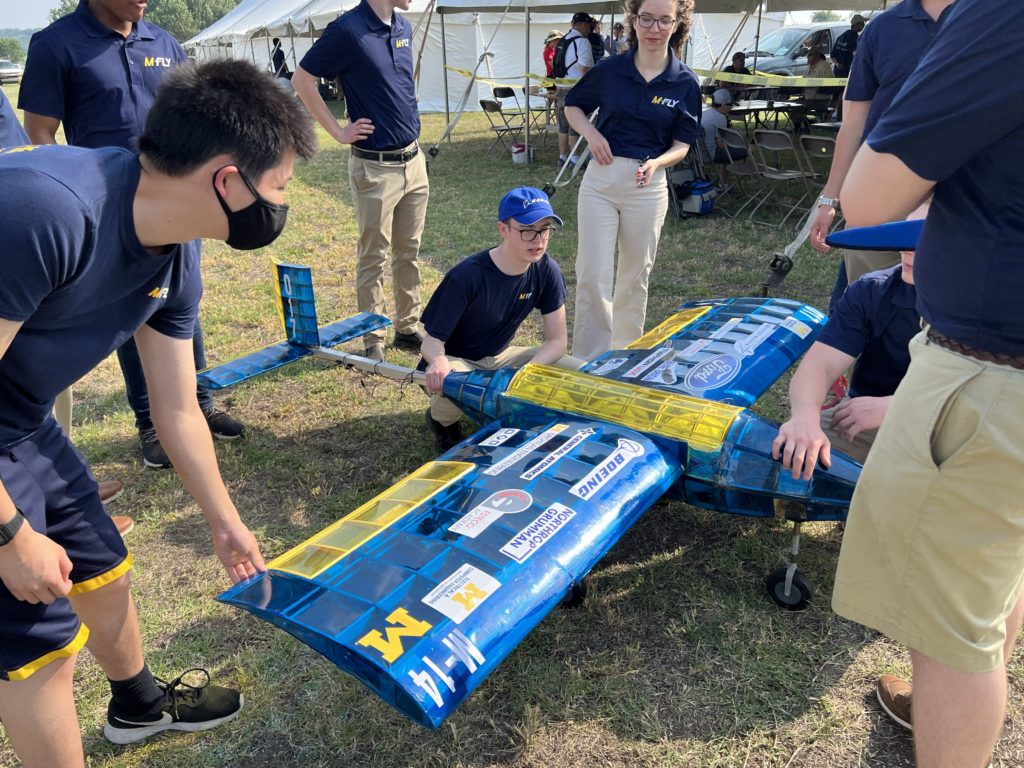
James Li (left), Jackson Lawson (crouching), Ann Garbowski (standing) and M-Fly teammates prepare their Regular Class aircraft with a cargo of soccer balls for the SAE Aero Design Competition in Fort Worth, Texas.
Concrete Canoe team members conduct paddling practice in the Aaron Friedman Marine Hydrodynamics Laboratory.
